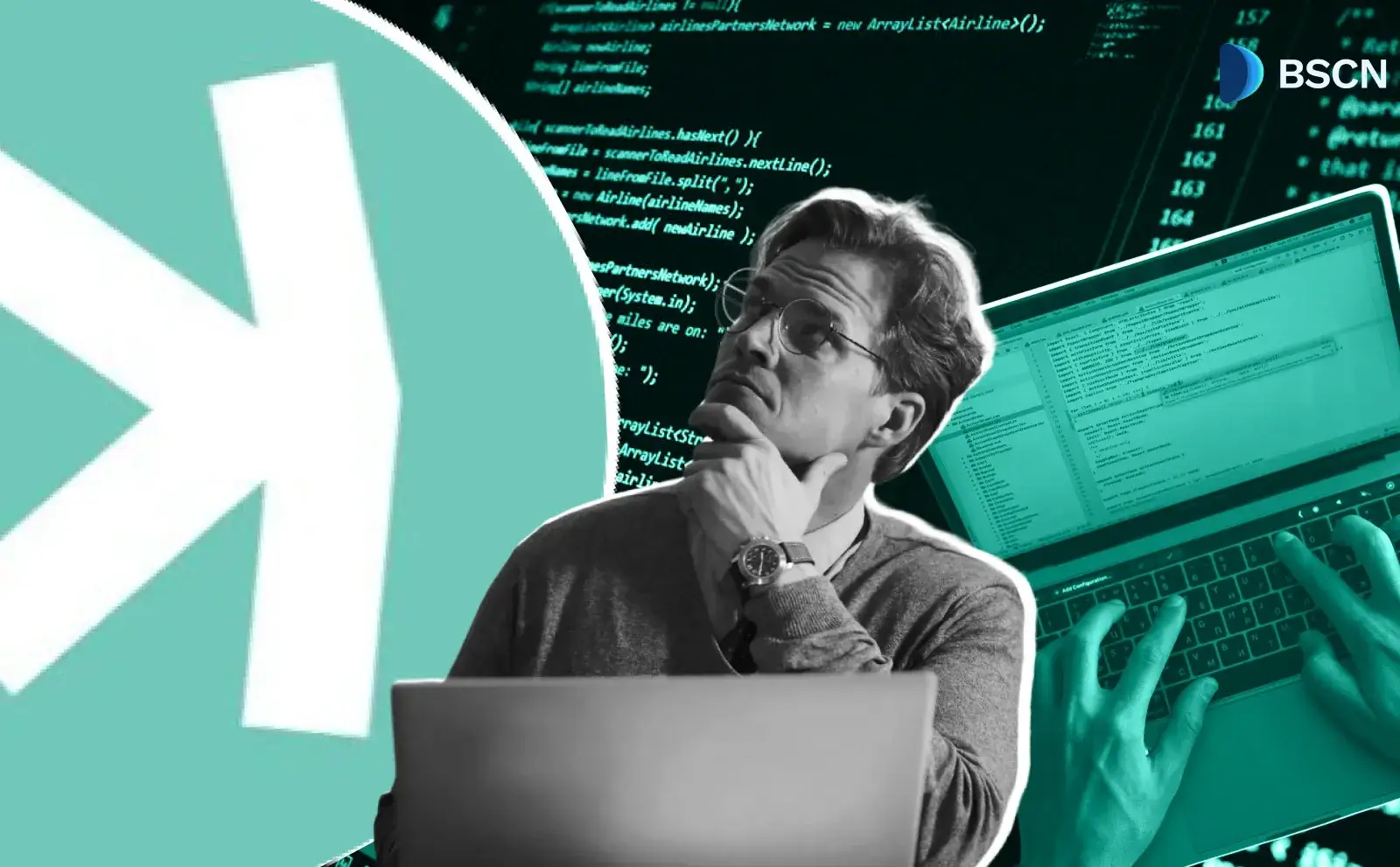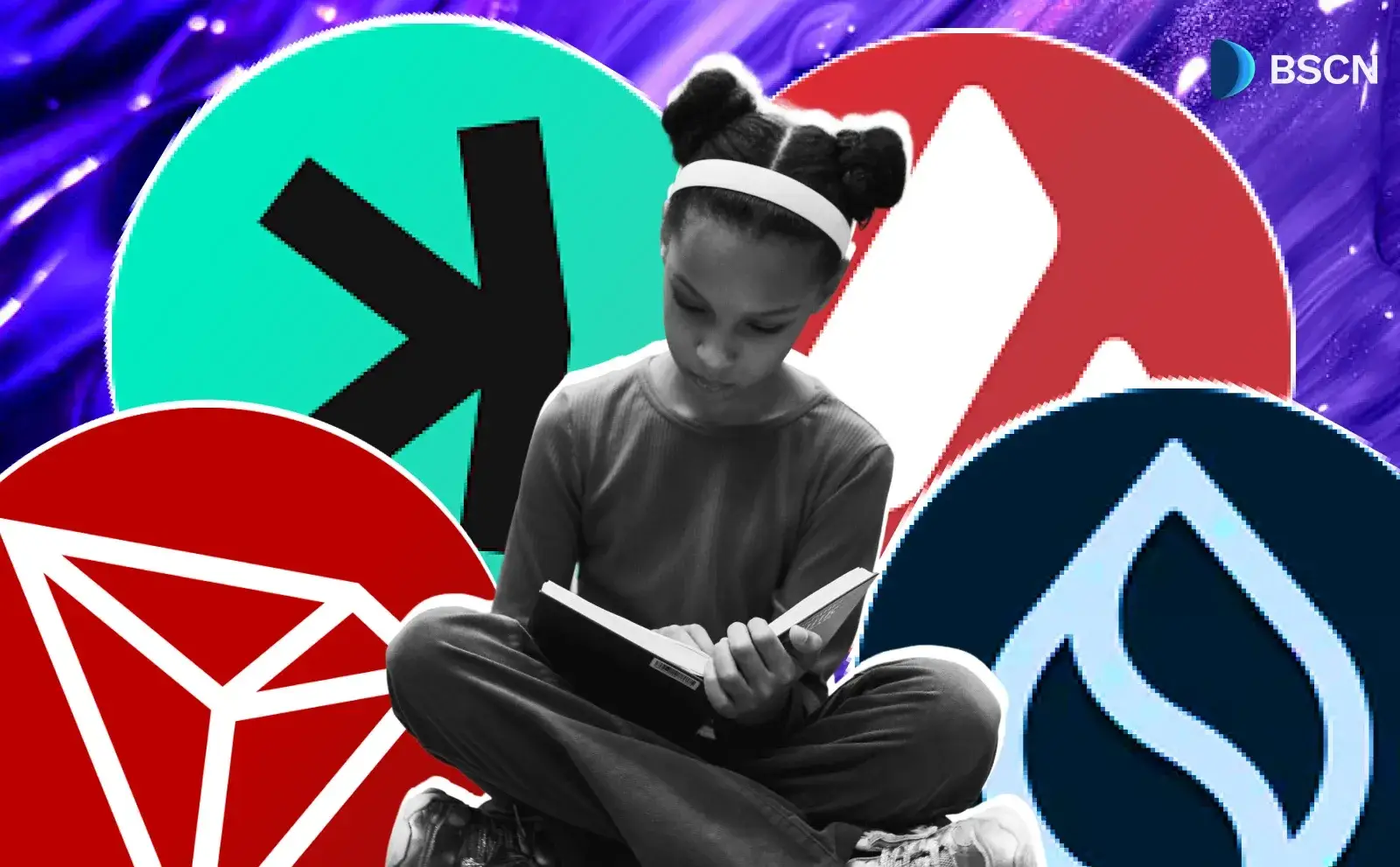Research
(Advertisement)
Exploring Kaspa's vProgs: The Framework for Scalable, Verifiable Applications

vProgs equips Kaspa with tools for off-chain execution, which support dApps while maintaining the network’s high throughput.
UC Hope
September 12, 2025
(Advertisement)
Table of Contents
Kaspa released the first draft of its vProgs Yellow Paper on September 11, 2025. This document details a protocol for verifiable programs, or vProgs, which enable off-chain computations secured by zero-knowledge proofs and anchored to Kaspa's Layer 1 network.
The framework aims to support decentralized applications while maintaining the network's high block production rates. The announcement, shared via an X post by @DailyKaspa, comes one day before the Kaspa Experience conference in Berlin, where developers and community members will discuss the project's roadmap.
Background on Kaspa's BlockDAG Architecture
Kaspa operates differently from linear blockchains, such as Bitcoin or Ethereum. It employs a blockDAG, which permits multiple blocks to reference each other in parallel, reducing the need to orphan blocks during mining. This design is based on the GHOSTDAG protocol, developed by Yonatan Sompolinsky, which extends the Nakamoto consensus to accommodate higher block rates without compromising security.
Presently, Kaspa processes 10 blocks per second, with plans to increase this to 32 blocks per second and potentially 100 in the longer term. Confirmations typically occur within one to 10 seconds, with the primary limitation being network latency rather than on-chain processing. This results in a theoretical throughput of over 10,000 transactions per second, far exceeding Bitcoin's 3 to 7 transactions per second or Ethereum's 15 to 30 transactions per second on Layer 1 before sharding implementations.
The network relies on proof-of-work consensus, where miners solve computational puzzles to add blocks. Transaction fees and block rewards are paid in KAS tokens, the native cryptocurrency of the Kaspa network. Kaspa launched in 2021 with a fair distribution model, avoiding venture capital funding, which has contributed to its community-driven development.
Kaspa has primarily served as a base layer for payments and data settlement, incorporating standards like KRC-20 for fungible tokens. Until the vProgs proposal, it lacked native support for smart contracts, relying on simpler scripting for basic operations.
What is Kaspa vProgs?
vProgs, short for verifiable programs, introduces a system for executing complex logic off the main chain while ensuring results can be verified on Kaspa's Layer 1. Each vProg acts as a self-contained unit, managing its own state and transition rules, similar to how programs function on Solana but with added zero-knowledge proof verification.
Zero-knowledge proofs allow a prover to demonstrate the correctness of a computation without disclosing the underlying data. In vProgs, these proofs are submitted periodically to Layer 1, confirming the integrity of off-chain activities. This approach keeps the main chain lightweight, focusing on validation rather than execution, which aligns with Kaspa's emphasis on speed and efficiency.
The Yellow Paper draft, version 0.0.1, describes vProgs as enabling "sovereign yet composable" applications. Sovereignty means each vProg controls its internal operations independently, including read and write permissions. Composability allows one vProg to read data from another, facilitating interactions like cross-application transactions, but writes are restricted to the originating vProg to avoid conflicts.
The development of vProgs dates back to an August 2025 discussion thread on Kaspa's research forum, where contributors addressed challenges in synchronous composability, including proof latency and resource sharing. The draft incorporates feedback from those sessions, though many elements remain under refinement, including account creation processes and data pruning mechanisms.
Core Technical Features of vProgs
Several mechanisms underpin vProgs' functionality, designed to handle dependencies and efficiency in a high-throughput environment:
Proof Stitching: Proof stitching combines multiple zero-knowledge proofs from interconnected vProgs into a single commitment, which is then submitted to Layer 1. This supports atomic transactions across applications, where outcomes settle simultaneously without intermediate delays common in rollup-based systems.
Conditional Proof Batches: Conditional proof batches group related transactions for collective proving, which lowers computational overhead. For instance, in a DeFi scenario involving multiple swaps, batching reduces the number of individual proofs needed.
Computation DAG: The Computation DAG forms a dependency graph at the application layer, mirroring Kaspa's blockDAG structure. It tracks data flows between vProgs, ensuring that referenced information remains available and that execution order is maintained amid parallel processing. This graph helps prevent overload by sequencing dependent operations.
Resource Metering: Resource metering introduces controls to manage costs. Internally, each vProg uses its own Layer 2 gas model for computations. On Layer 1, ScopeGas meters cross-vProg interactions, charging fees based on data dependencies to discourage spam or excessive resource use, such as one application flooding another's input requirements.
Economic Model: The economic model for vProgs relies on permissionless provers—nodes that generate and submit proofs—who earn fees from users. Liveness, or the guarantee of timely proofs, operates through two modes: optimistic, where provers cooperate, or sovereign, where applications run independently. This setup incentivizes participation without relying on centralized coordinators.
Privacy Features: Privacy features naturally emerge from zero-knowledge proofs, enabling encrypted states in applications such as confidential transactions or oracles. The framework supports a range of use cases, from micropayments to enterprise data settlement, by anchoring verifiable outputs to Kaspa's fast confirmation times.
The Kaspa Experience Conference in Berlin
The vProgs announcement aligns with the Kaspa Experience, a community conference scheduled for September 13, 2025, at Atelier Gardens in Berlin. This one-day event, limited to 500 tickets priced at $150 plus a $50 afterparty fee, requires payment in KAS tokens, marking an early real-world application of the cryptocurrency for event logistics, including food, drinks, and merchandise.
The agenda features keynotes from core developers, including Sompolinsky on advancements in GHOSTDAG, panels on smart contract integration, and workshops focused on practical implementations. A hackathon will encourage prototyping, alongside a Kaspa Art Expo showcasing creative uses of the network. While no dedicated vProgs session appears on the schedule, the event's press materials highlight Kaspa's programmable layer as a foundation for DeFi and payment systems, suggesting informal discussions on the new framework.
Attendees, drawn from miners, merchants, and developers, will network in a setting that emphasizes Kaspa's decentralized ethos. The conference represents the project's first major in-person gathering, building on online forums and Telegram channels for collaboration.
Challenges and Implementation Timeline
Implementing vProgs involves hurdles common to zero-knowledge systems. Proof generation remains computationally intensive, potentially introducing latency despite Kaspa's high block speed. Developers must address virtual machine compatibility to ease porting from environments like the Ethereum Virtual Machine.
Forum contributors have simulated gas-sharing models to mitigate externalities, where one vProg's activity impacts others. Data availability in the Computation DAG requires careful design to avoid centralization risks.
Timelines from the August discussions indicated a testnet rollout by the fourth quarter of 2025, following community feedback on the draft. Full mainnet integration would depend on auditing and performance benchmarks, with pruning and account mechanics slated for future revisions.
Compared to Ethereum's rollups, which can fragment liquidity across layers, or Solana's on-chain execution, which tests throughput limits, vProgs seeks to integrate verifiable computation directly into a proof-of-work base layer. This preserves decentralization while leveraging parallel block production.
Conclusion
vProgs equips Kaspa with tools for off-chain execution verified by zero-knowledge proofs, including proof stitching for composability, a Computation DAG for dependency management, and ScopeGas for resource control.
These elements enable applications to operate scalably on a network that confirms blocks every few seconds, supporting use cases ranging from DeFi to data settlement without compromising Layer 1 security.
Sources:
- Kaspa Daily X Article on vProgs: https://x.com/DailyKaspa/status/1966149209968505132
- vProgs Yellow Paper Draft v0.0.1: https://github.com/kaspanet/research/blob/main/vProgs/vProgs_yellow_paper.pdf
- Kaspa Research Forum Thread on Synchronous Composability: https://research.kas.pa/t/concrete-proposal-for-a-synchronously-composable-verifiable-programs-architecture/387
- Kaspa Experience in Berlin: https://experience.kaspa.events/
Read Next...
Frequently Asked Questions
What is Kaspa's blockDAG and how does it differ from traditional blockchains?
Kaspa's blockDAG allows parallel block creation and referencing, enabling 10 blocks per second compared to Bitcoin's single block every 10 minutes. This structure uses the GHOSTDAG protocol to maintain security at high rates.
How do zero-knowledge proofs work in vProgs?
Zero-knowledge proofs in vProgs let off-chain computations be validated on Kaspa's Layer 1 without revealing inputs. Provers submit these proofs periodically, ensuring state integrity while keeping the main chain efficient.
When will vProgs launch on Kaspa's mainnet?
The Yellow Paper draft targets testnet deployment by Q4 2025, with mainnet following after audits and refinements based on community input.
Disclaimer
Disclaimer: The views expressed in this article do not necessarily represent the views of BSCN. The information provided in this article is for educational and entertainment purposes only and should not be construed as investment advice, or advice of any kind. BSCN assumes no responsibility for any investment decisions made based on the information provided in this article. If you believe that the article should be amended, please reach out to the BSCN team by emailing [email protected].
Author
 UC Hope
UC HopeUC holds a bachelor’s degree in Physics and has been a crypto researcher since 2020. UC was a professional writer before entering the cryptocurrency industry, but was drawn to blockchain technology by its high potential. UC has written for the likes of Cryptopolitan, as well as BSCN. He has a wide area of expertise, covering centralized and decentralized finance, as well as altcoins.
(Advertisement)
Latest News
(Advertisement)
Crypto Project & Token Reviews
Project & Token Reviews
Comprehensive reviews of crypto's most interesting projects and assets
Learn about the hottest projects & tokens
Latest Crypto News
Get up to date with the latest crypto news stories and events

















